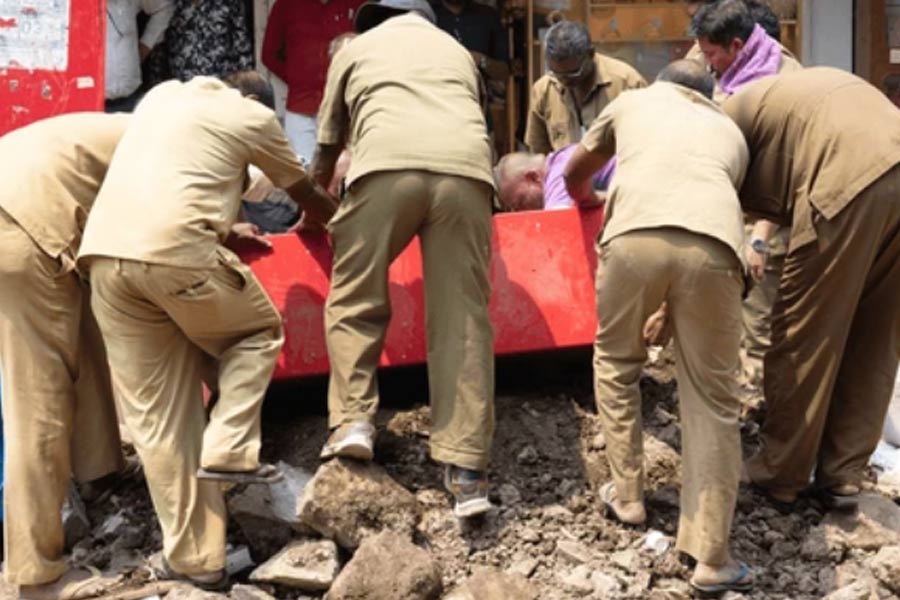 |
 |
 |
 |
 |
| The Chintamaniswar temple in Bhubaneswar. Pictures by Ashwinee Pati |
Bhubaneswar, Oct. 11: The Chintamaniswar temple in the capital is one of the ancient monuments that are facing issues related to conservation and withering away because of neglect and decay.
Situated on the Cuttack Road opposite Old Station Bazar area, the temple is taken care of by local residents.
Built during the 13th to 14th century, urbanisation seems to be threatening the shrine, which is now surrounded by many buildings and shops.
The original structure has been completely given a modern look by the temple management as the sandstone structure was devoid of any architectural motifs. The exteriors do not replicate the original ancient appearance since the temple has been whitewashed with lime.
A number of contemporary structures have also come up over the years within the precinct. The entire floor of the temple has been laid with marble tiles. However, a couple of original carvings are still visible in some parts of the temple. Moreover, growth of some wild vegetation is also visible on the dome.
“This temple is more significant for its ancient existence than its architecture since the original monument was made with low quality stones and there were not many carvings on it,” said Bijay Rath, an archaeologist.
“However, new constructions inside an age-old monument without archaeological guidance could prove harmful to the structure. But the local residents have managed the Chintamaniswar temple well so far. The main attraction for an archaeologist at this site is the tank attached to the temple,” said Rath.
The Chintamaniswar tank indeed is an attraction for it has become a huge aquarium with devotees and temple management keeping a large variety of fishes in it. Used for religious rituals and bathing purposes, the tank is also a sightseeing spot owing to the dense population of fishes in the water. But the water is not clear and the floor of the tank seems to have acquired algae deposits since the water appears green.
However, the major issue of concern is the growth of buildings around the temple. A number of structures have come up very close around the boundary wall of the temple while more are under construction.
“Since this monument has not been declared protected under the state archaeology department, people tend to flout the restrictions laid down for any construction work around the monument. However, this is a Ganga period monument and is of much historical value and hence should be preserved,” said Rath.
Officials at the state archaeology said the local residents have been cleaning and taking care of the temple and its premises for many years.
“The temple is in a fair condition at present. We will try to include it in our cleaning drive that has begun for heritage sites in the city,” said an official.
“As far as vandalism is concerned, we need the support of other administrative authorities to tackle it,” added the official.











